Clovelly Court: The Devon country estate pulling off the vital trick needed by a modern country estate
Every Tuesday, we go back through the Country Life archives to enjoy an article from the past — this week, it's Clovelly Manor in Devon. Tim Longville visited for the magazine some four years ago, with Val Corbett taking the pictures.
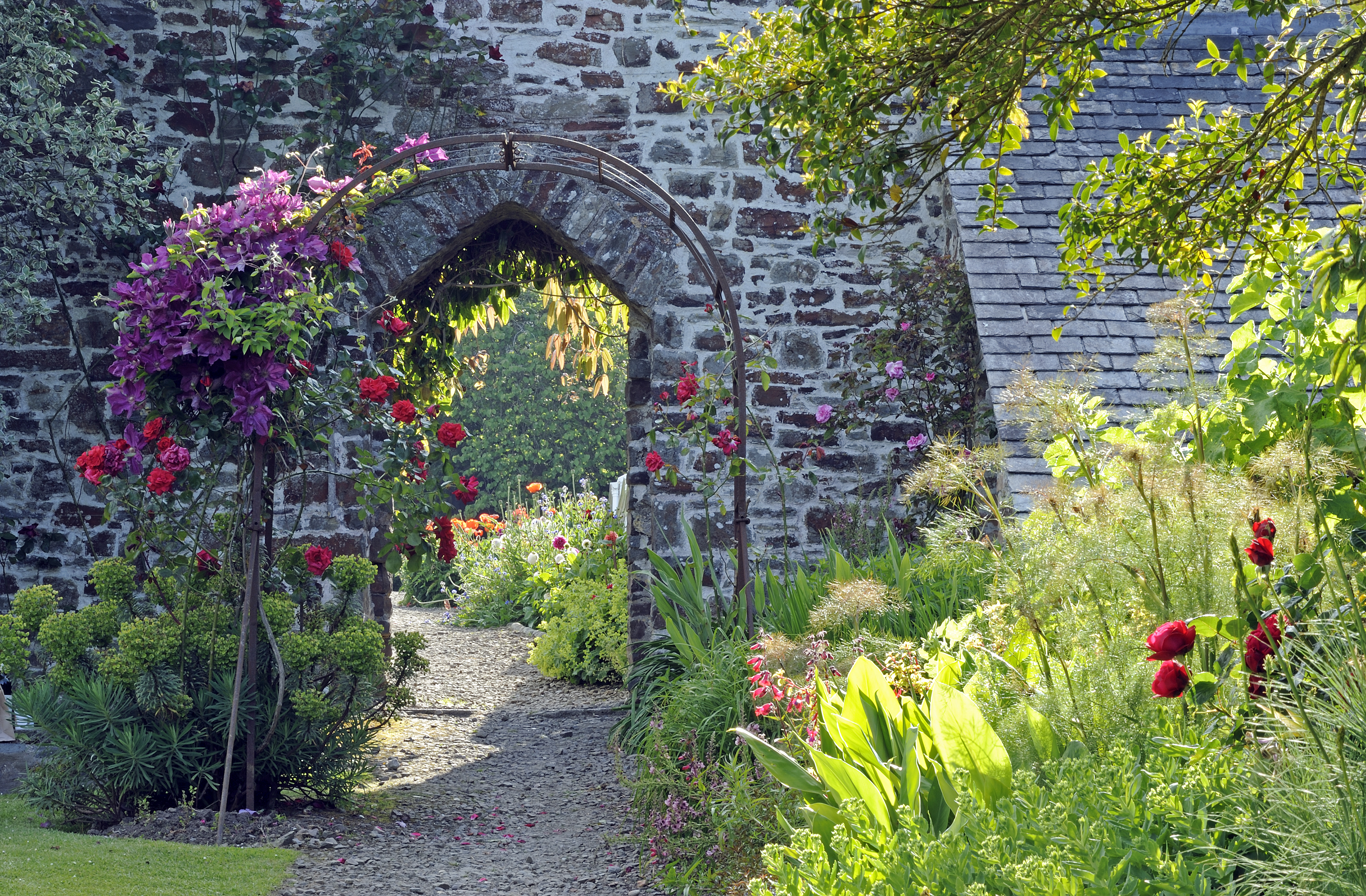

The precipitous, car-free, cobbled village street at Clovelly on the north Devon coast must be one of the most familiar picturesque scenes in Britain. Of course, the village’s thousands of visitors are a vital source of income for the Clovelly estate, of which the village is a central part, but the vital trick any country estate needs to bring off nowadays is to have all of its parts contributing to its overall income stream.
When John Rous took it over some 30 years ago, there was another equally central part of it that clearly wasn’t contributing in that way: the walled garden of the estate mansion, Clovelly Court. The court itself is the creation of several generations of the Hamlyns, who have owned the estate since the 18th century, although it has often passed in the female line. Zachary Hamlyn rebuilt the ancient Cary manor house in a simple Georgian style when he acquired the estate in 1738.
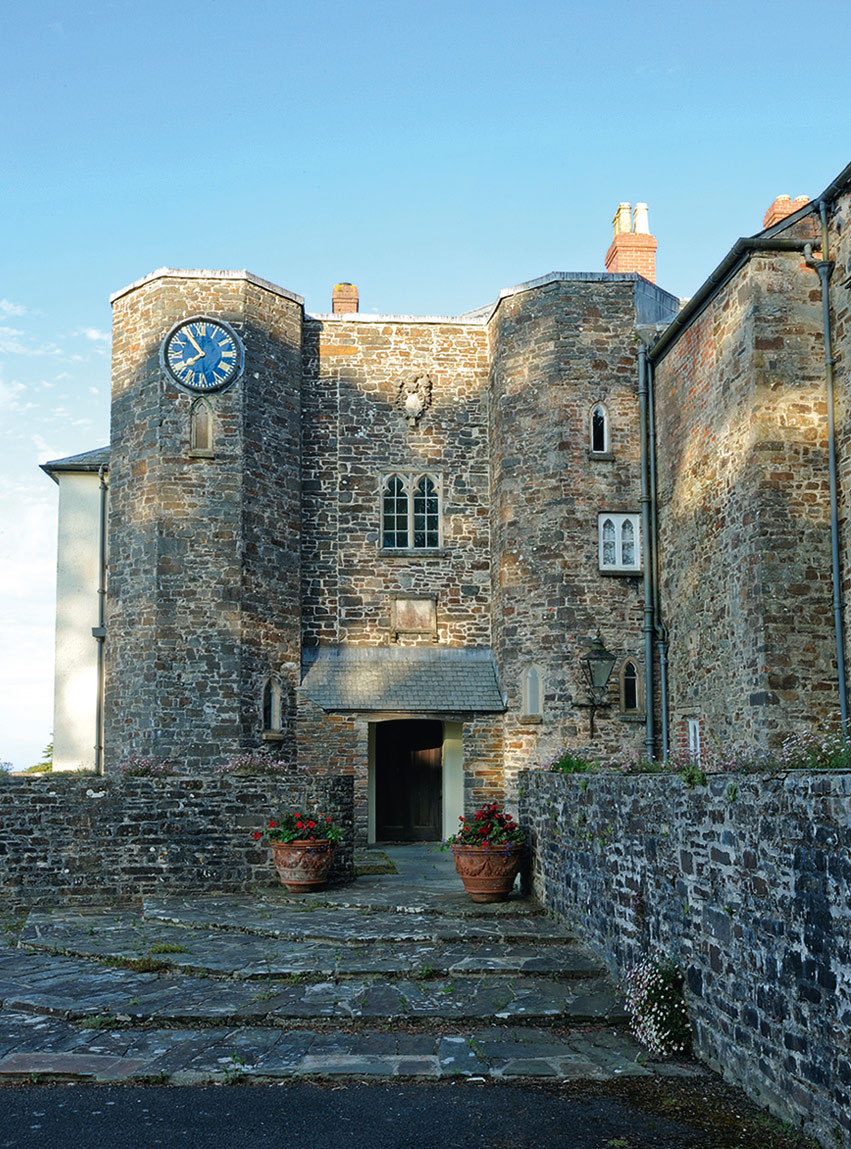
Much of that rebuilding was destroyed in a fire 50 years later, however, and his successor’s rebuilding was in a more Gothic style (although that, too, was later modified). Above all, what distinguishes the building is its situation perched above Bideford Bay with spectacular views. Hence, no doubt, the grassed terraces (restored by Mr Rous) leading to balustrading at the edge of those views. Hence also, the stone summer house tucked into a corner between house and walled garden, designed by Rex Whistler when he worked here in the 1930s, creating a ‘Clovelly Chintz’ and a range of ‘Clovelly View’ tableware.
Because of the irregular and often precipitous nature of Clovelly’s dramatic landscape, not only are mansion and walled garden cheek-by-jowl, but so are the village church, its churchyard and graveyard — a fact that came to have some importance when Mr Rous eventually formulated a plan for the future of the walled garden. ‘It clearly had the potential to be another visitor attraction, but it equally clearly wasn’t one then.’
Originally comprising a traditional kitchen and cutting garden, by the time he took over, many of the beds had been grassed over and mare’s tail and ground elder had infested the rest. The fine range of five Victorian Messenger greenhouses was seriously dilapidated and the walls needed urgent attention.
Briefly considering getting in a designer to produce an immediate complete plan (rapidly rejected as too expensive to make sense), Mr Rous eventually opted for an ‘in-house’ restoration over many years. ‘The beds were under Mypex for two years to get rid of weeds. The Messenger ironwork was still sound, so we gradually restored the timber and glass. A section of wall that had collapsed was rebuilt, then all the rest was repointed and recoped and, finally, the doorways were given new granite lintels.’

The restored garden was to be very much in traditional style, with vegetables, netted soft fruit and trained hard fruit on the walls, much of it edged by relaxed cottage-style mixed borders containing a good deal of cutting material. However, an acre and a half of garden creates an enormous amount of produce.
Sign up for the Country Life Newsletter
Exquisite houses, the beauty of Nature, and how to get the most from your life, straight to your inbox.
How could that be put to financially sensible use? The piecemeal answers are typical of Clovelly’s style. Much goes to the village’s two hotels, the New Inn and the Red Lion, but visitors can buy produce, either direct from the garden or from the village’s visitor centre (including Clovelly Court Apple Juice, pasteurised but with no added sugar, which Mr Rous recommends as ‘nicely tart’).
The garden also provides hanging baskets for all the houses down the village street and the adjacent churchyard and graveyard mean not only the regular sound of the church bell as an atmospheric addition to the garden’s soundtrack, but also a continual demand for cut flowers for graves.
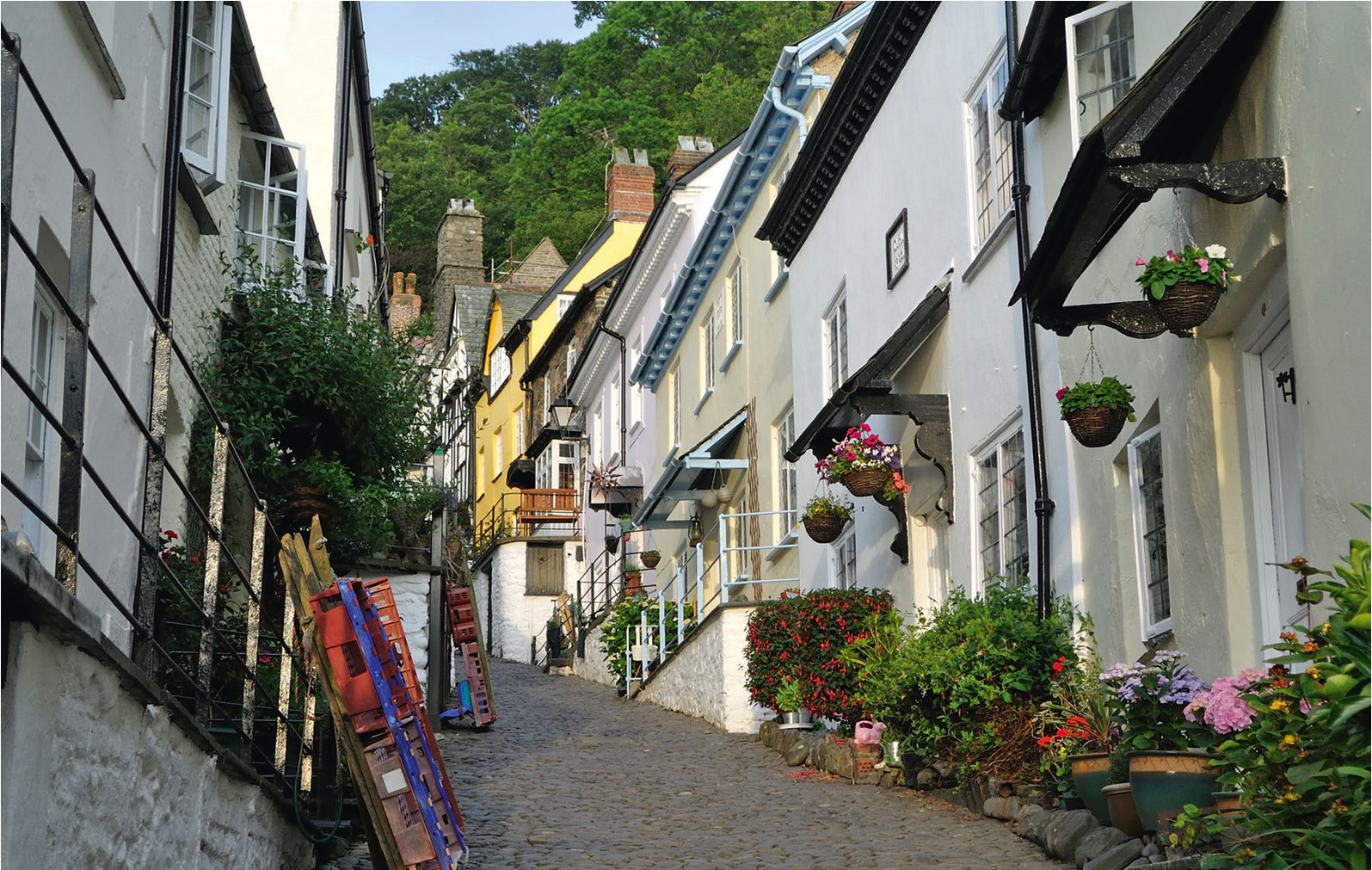
Mr Rous gratefully acknowledges that the present flourishing state of the garden has only been achieved by his good fortune in finding two successive female head gardeners of great skill and apparently limitless energy. All the early planting of vegetables, soft fruit and ornamental beds was undertaken by Sarah Conibear, who still had sufficient energy left to develop a private passion for lupins.
That passion eventually led to her setting up her own firm, West Country Lupins, with which she has since won three Chelsea gold medals. Her successor, Heather Alford, is a farmer’s daughter who, as well as tending the Clovelly garden and helping to look after her family’s cattle, also finds time to tend a two-acre garden of her own. The Clovelly Court garden is divided into two by an interior wall and slopes from west to east.
As Mrs Alford points out approvingly, that means ‘the soil, which is good anyway and enriched by regular additions of donkey manure, is very free-draining and any frost we get just rolls away’. The greenhouses along the southfacing wall of the garden’s upper section are now back in full production, the first house being devoted to apricots, the second to peaches, the third to vines and lemons, the fourth to Muscat grapes and the bottom to figs and oranges. A sixth, separate greenhouse is devoted to tomatoes and adjacent cold frames are packed with bedding plants for hanging baskets and seedling vegetables waiting to be planted out. Here, too, is a mini-orchard of ancient apple trees, each surrounded by a little frill of aquilegias, daffodils, lilies, primulas and bluebells.
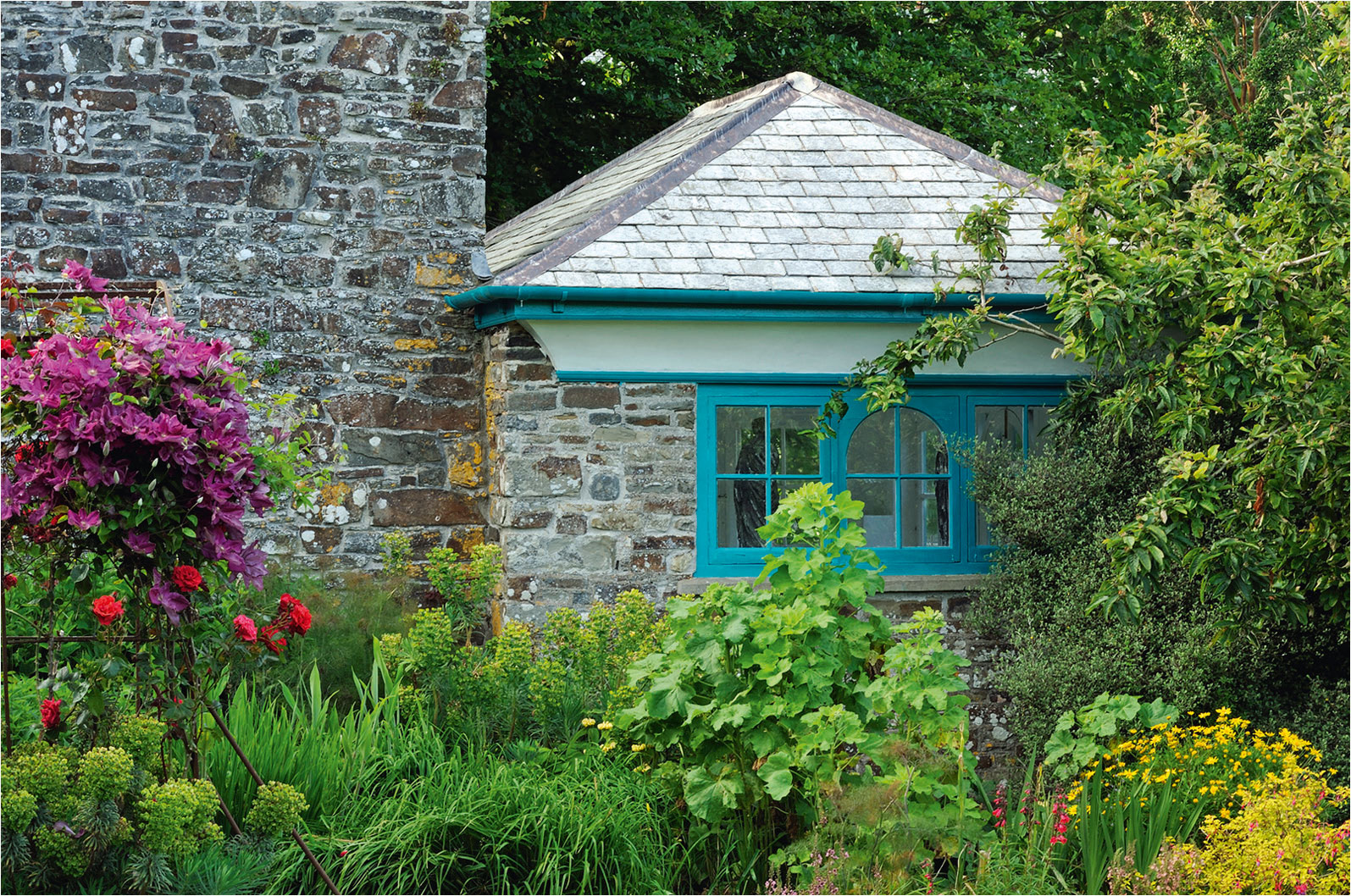
The vegetable beds are filled with row after row of potatoes, courgettes (Goldrush), onions, leeks (Gigante D’inverno) and broad beans. The runner beans, however, are partly protected by homemade 3ft by 5ft woodenframed polythene shelters. ‘They’re a pain because they take so long to put up,’ explains Mrs Alford, ‘but they’re worth it because it means our runners are earlier than anyone else’s, so we get higher prices.’ Here, too, are rows of sweet peas, cut flowers such as stocks and statice and a whole bed of mixed dahlias, much of which will be sold to relatives visiting the graveyard or churchyard just beyond the garden’s upper wall.
The lower garden is equally productive, with more leeks and late potatoes, although, here, there are more unfussily effective mixed edging borders. On the shadier north side, there are hostas, hellebores, veratrums, ferns, brunnera and shrubs, such as camellias, magnolias and myrtle. On the sunnier south, the cast-list includes nepetas, foxgloves, poppies, geraniums, daylilies and irises, but, also, to take advantage of this sheltered situation, some exoticlooking Australian bottlebrushes (Callistemon rigidus).
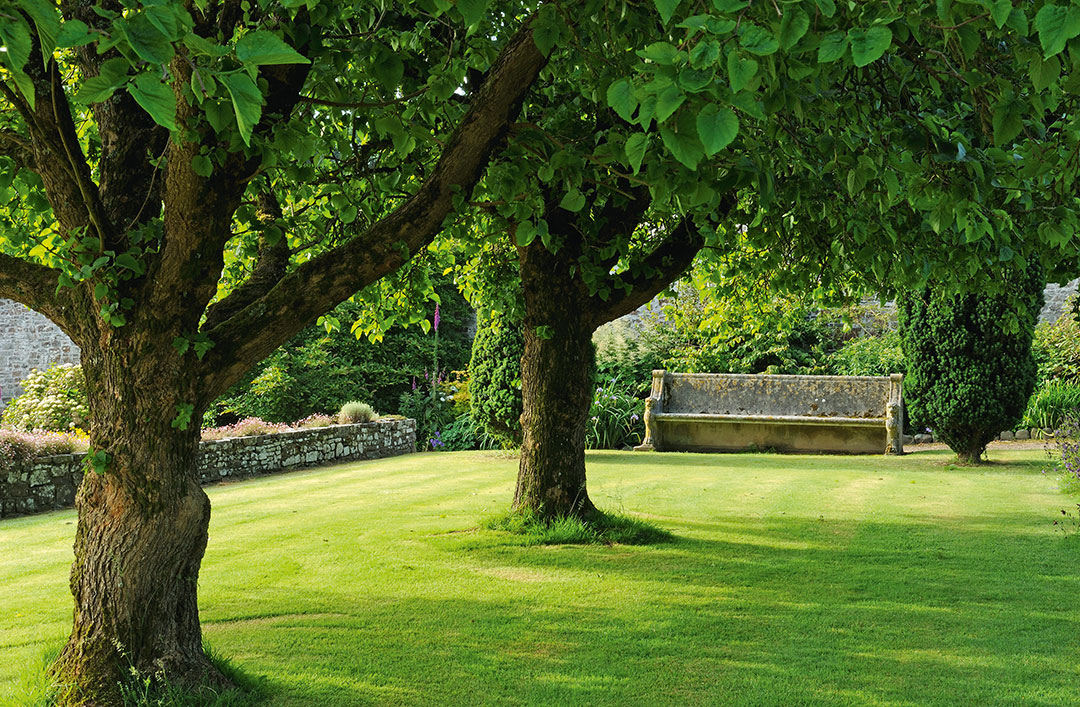
Even this isn’t the end of the garden, for, nowadays, it has spread outside, to take advantage of the south-facing side of its north wall. Here, as on all the walls within, are well-trained and productive apples, plums, pears and cherries and the beds beyond are filled with beetroot, carrots, sweetcorn and Hallowe’en pumpkins. A top cage is filled with soft fruit, a bottom one with cabbages, necessary to keep off that plague of an estate gardener’s life, the pheasants from the estate shoot.
The whole garden, in its setting of mansion, church and surrounding rugged landscape, is intensely atmospheric, but, in its present unpretentiously flourishing conditions, it is also intensely encouraging: proof that, given the right conditions and approach, there can still be a viable future for a traditional walled garden.
The garden at Clovelly Court, Devon, is open all year from 10am to 4pm. If you want just to visit the garden, which is at the top of the village, along the path to All Saints Church, there is a small admission charge. Otherwise, free admission is included as part of the entry charge to Clovelly village. For more details, visit www.clovelly.co.uk Find out more about Sarah Conibear’s lupins at www.westcountrylupins.co.uk.
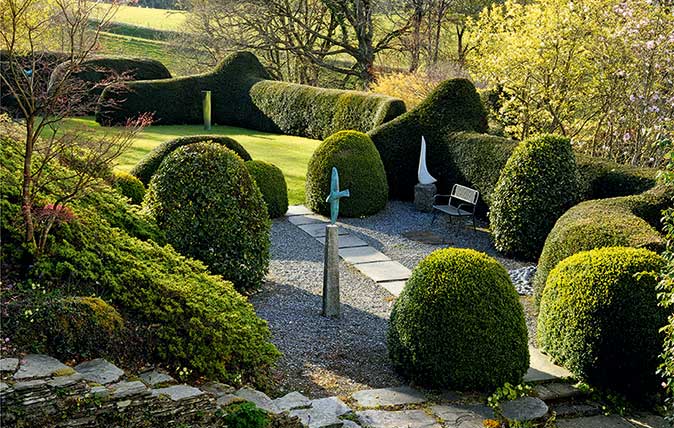
Credit: Hamblyn Coombe - Val Corbett / Country Life
How to create the perfect setting for outdoor art, as at Hamblyn’s Coombe
Tim Longville is guided through the hillside garden of sculptor Bridget McCrum.
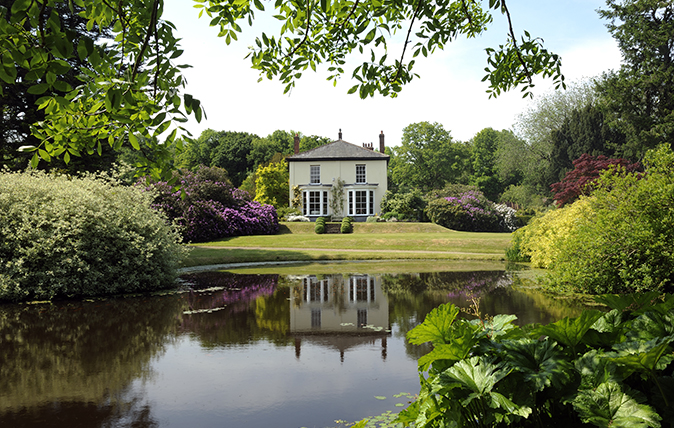
Regency House, Hemyock: A Devonshire garden of great atmosphere and personality
Tim Longville enjoys a mixture of plantsmanship and laissez-faire gardening in Devon.

Chisenbury Priory: A handsome and quirky streamside garden developed over decades
Tim Longville discovers how successive owners and artists have made their mark on the grounds of an ancient streamside property.
Country Life is unlike any other magazine: the only glossy weekly on the newsstand and the only magazine that has been guest-edited by HRH The King not once, but twice. It is a celebration of modern rural life and all its diverse joys and pleasures — that was first published in Queen Victoria's Diamond Jubilee year. Our eclectic mixture of witty and informative content — from the most up-to-date property news and commentary and a coveted glimpse inside some of the UK's best houses and gardens, to gardening, the arts and interior design, written by experts in their field — still cannot be found in print or online, anywhere else.
-
 Two quick and easy seasonal asparagus recipes to try this Easter Weekend
Two quick and easy seasonal asparagus recipes to try this Easter WeekendAsparagus has royal roots — it was once a favourite of Madame de Pompadour.
By Melanie Johnson
-
 Sip tea and laugh at your neighbours in this seaside Norfolk home with a watchtower
Sip tea and laugh at your neighbours in this seaside Norfolk home with a watchtowerOn Cliff Hill in Gorleston, one home is taller than all the others. It could be yours.
By James Fisher